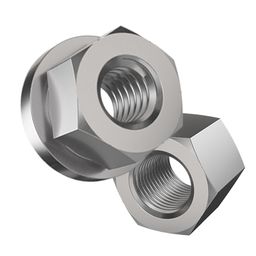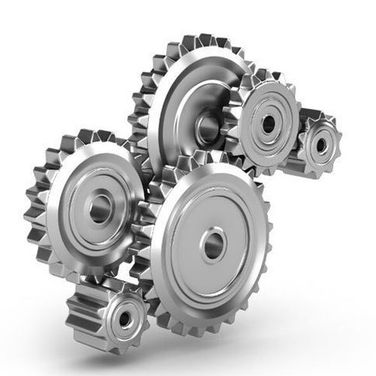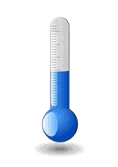ASTM Heavy Hex Nuts
ASTM Heavy Hex - Nuts

ASTM A194, Latest Revision, Grade 2H
Suitable for high temperatures and high-pressure conditions.
ASTM A194, Grade 2HM
Similar to 2H nuts except this grade is designed for use in corrosive environments.
ASTM A194, Latest Revision, Grade 4
Heat-treated molybdenum steel nuts suitable for severe temperature and pressure conditions.
ASTM A194, Latest Revision, Grade 7L
New stamping as per ASTM is 7L. Heat-treated chrome-molybdenum steel nuts suitable for extreme temperature and pressure conditions. Suitable for sub-zero service conditions and have minimum Charpy impact values of ASTM spec. A320. Grade 7 down to 150°F.
ASTM A194, Grade 7ML
New stamping as per ASTM is 7ML. Similar to grade 7L nuts except this grade is designed for use in corrosive environments.
ASTM A194, Grade 8/8M
Stainless steel nuts designed for use in corrosive environments.
Mechanical Requirements

ASTM A193/A193M
ASTM A194/A194M
ASTM A320/A320M
STUDS
STUDS NOTES
- To meet the tensile requirements, the Brinell hardness shall be over 200 HB (93 HRB).
- Class 1 is solution treated. Class 2 is solution treated and strain hardened. Austenitic steels in the strainhardened condition may not show uniform properties throughout the section particularly in sizes over 3/4” in diameter.
- For sizes 3/4” in diameter and smaller, a maximum hardness of 241 HB (100 HRB) is permitted.
- To meet the tensile requirements, the Brinell hardness shall not be less than 200 HB or 93 HRB.
| ASTM A193 ASTM A320 |
MINIMUM TEMPERING TEMP. °F (°C) |
TENSILE STRENGTH MIN. KSI (MPA) |
YIELD STRENGTH MIN. KSI. (MPA) |
ELONGATION 2" (50mm) MIN. % |
REDUCTION OF AREA MIN. % |
HARDNESS MAXIMUM |
|
|---|---|---|---|---|---|---|---|
| GRADE | SIZE | ||||||
| B7 | 2-1/2” and under | 1100 (593) | 125 (860) | 105 (725) | 16 | 50 | 321 HB (35HRC) |
| over 2-1/2” to 4” | 1100 (593) | 115 (790) | 95 (655) | 16 | 50 | 321 HB (35HRC) |
|
| B7M Note 1 |
2-1/2” and under | 1150 (620) | 100 (690) | 80 (550) | 18 | 50 | 235 HB (99HRB) |
| over 2-1/2” to 4” | 1150 (620) | 100 (690) | 80 (550) | 18 | 50 | 235 HB (99HRB) |
|
| ASTM A193 ASTM A320 |
MINIMUM TEMPERING TEMP. °F (°C) |
TENSILE STRENGTH MIN.KS1 (MPA) |
YIELD STRENGTH MIN. KSI (MPA) |
ELONGATION 2" (50mm) MIN. % |
REDUCTION OF AREA MIN. % |
HARDNESS MAXIMUM |
|
|---|---|---|---|---|---|---|---|
| GRADE | SIZE | ||||||
| L7 | 2-1/2” and under | Quenched and Tempered 1100 (593) |
125 (860) | 105 (725) | 16 | 50 | |
| L7M Note 4 |
2-1/2” and under | Quenched and Tempered 1150 (620) |
100 (690) | 80 (550) | 18 | 50 | 235 HB (99HRB) |
| ASTM A193 ASTM A320 |
MINIMUM TEMPERING TEMP. °F (°C) |
TENSILE STRENGTH MIN. KSI (MPA) |
YIELD STRENGTH MIN. KSI. (MPA) |
ELONGATION 2" (50mm) MIN. % |
REDUCTION OF AREA MIN. % |
HARDNESS MAXIMUM |
|
|---|---|---|---|---|---|---|---|
| GRADE | SIZE | ||||||
| B8 Class 1 Note 2, 3 |
All Diameters |
Carbide Solution Treated |
75 (515) | 30 (205) | 30 | 50 | 223 HB (96HRB) |
| B8 Class 2 Note 2 |
3/4” and under | Carbide Solution Treated and Strain Hardened | 125 (860) | 100 (690) | 12 | 35 | 321 HB (35HRC) |
| over 3/4” to 1” |
115 (790) | 80 (550) | 15 | 35 | |||
|
over 1” to 1-1/4” |
105 (725) | 65 (450) | 20 | 35 | |||
| over 1-1/4” to 1-1/2" |
100 (690) | 50 (345) | 28 | 35 | |||
| ASTM A193 ASTM A320 |
MINIMUM TEMPERING TEMP. °F (°C) |
TENSILE STRENGTH MIN. KSI (MPA) |
YIELD STRENGTH MIN. KSI. (MPA) |
ELONGATION 2" (50mm) MIN. % |
REDUCTION OF AREA MIN. % |
HARDNESS MAXIMUM |
|
|---|---|---|---|---|---|---|---|
| GRADE | SIZE | ||||||
| B8M Class 1 Note 2, 3 |
All Diameters |
Carbide Solution Treated |
75 (515) | 30 (205) | 30 | 50 | 223 HB (96HRB) |
| B8M Class 2 Note 2 |
3/4” and under | Carbide Solution Treated and Strain Hardened | 110 (760) | 95 (655) | 15 | 45 | 321 HB (35HRC) |
| over 3/4” to 1” |
100 (690) | 80 (550) | 20 | 45 | |||
|
over 1” to 1-1/4” |
95 (655) | 65 (450) | 25 | 45 | |||
| over 1-1/4” to 1-1/2" |
90 (620) | 50 (345) | 30 | 45 | |||
NUTS
| ASTM A-194 | ASME SA-194 | MINIMUM AVERAGE TEMPERING |
BRINELL HARDNESS |
ROCKWELL HARDNESS |
||
|---|---|---|---|---|---|
| GRADE | CLASS AND SIZE | TEMP °F (°C) | C SCALE | B SCALE | |
| 2H | Up to and including 1-1/2" | 850 (455) | 248 - 327 | 24 - 35 | 95 min. |
| Over 1-1/2" | 212 - 327 | 35 max. | |||
| 2HM | All Sizes | 1150 (620) | 159 - 235 | 84 to 99 | |
| L7M | All Sizes | 1150 (620) | 159 - 235 | 84 to 99 | |
| 7L | All Sizes | 1100 (595) | 248 - 327 | 24 - 35 | |
| B8 and B8M | All Sizes | 126 - 300 | 32 max | 60 min | |
* In order to meet the tensile requirements, the hardness shall be no less than 200 HB or 93 HRB .
Impact Energy Absorption Requirements
Bolting for Low-Temperature Service
| ASTM A320 | A320M | MINIMUM AVERAGE IMPACT VALUE FOR EACH SET OF 3 SAMPLES 10 x 10 x 50mm K. - lbs. (Joules) |
|
|---|---|---|
| GRADE | TEST TEMP. °F (°C) |
|
| L7 | -150 (-101) | 20 (27) |
| L7M | -100 (-73) | 20 (27) |
| L43 | -150 (-101) | 20 (27) |
